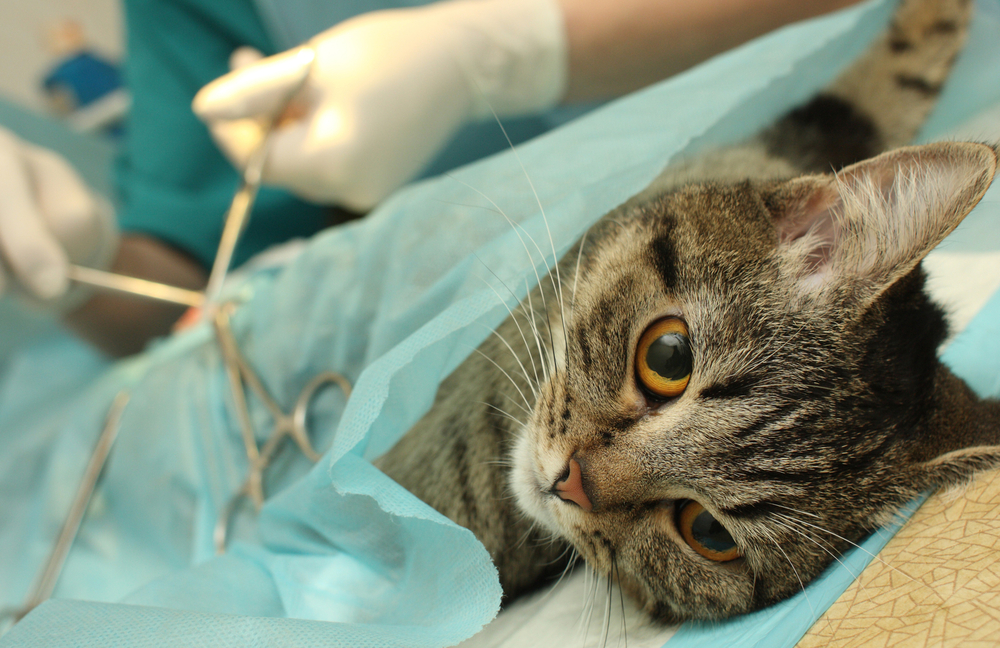Kim Campbell Thornton
One of the tenets of Fear Free is the importance of pain management. Pain brings along with it fear, anxiety, and stress, as any sufferer of chronic pain can attest.
Without good pain relief, pets may heal more slowly after surgery or an illness. Uncontrolled pain negatively affects nearly every vital organ system, resulting in increased myocardial work, hypoventilation, decreased gastrointestinal motility, and muscle protein catabolism, to name just a few. And the human-animal bond can be damaged when owners must handle pets in pain.
Opioids Hard to Get
A shortage of injectable opioids such as morphine, fentanyl, methadone, and hydromorphone means the drugs are less available for veterinary use. You may not notice this in a general practice, but surgeons, oncologists, and criticalists at specialty practices are acutely aware of it.
Their patients tend to be more debilitated and require more intensive care and more specialized surgical techniques. Because those patients are more compromised, they benefit from opioid support, but it isn’t always readily available.
“We’re short of opioids that our patients need,” says Sheilah Robertson, BVMS, DECVAA, senior medical director for Lap of Love Veterinary Hospice.
Learning Different Protocols
No patient goes without pain relief, but the ones who will benefit the most from opioids receive priority. For instance, opioids are the safest choice for patients with heart disease. Other patients can be managed effectively with different protocols, such as combining other drugs with opioids to minimize their use.
Julie Smith, DVM, DACVAA, at MedVet, a specialty practice in Louisiana, says anesthesiologists have had to become creative with their analgesia choices.
“We incorporated more local anesthesia techniques,” she says. “We try to incorporate nonsteroidals, local anesthetics, and local blocks whenever we can.”
Adjunct analgesics include ketamine, lidocaine, gabapentin and amantadine. And at about the same time that availability of opioids began to decrease, a long-acting form of bupivacaine (Nocita) was released. Injected into the surgical site, a single dose provides up to 72 hours of post-operative pain relief for dogs and cats.
For routine surgeries such as spays and neuters, NSAIDs can provide good pain control, but not every patient can tolerate them. Consider the piprant class of drugs for dogs who can’t take NSAIDs. Those drugs treat chronic pain such as osteoarthritis, Roberts says, but work on the whole cascade of inflammations.
Pain Relief for Cats
It’s not easy to provide safe and effective pain relief for cats. One NSAID, robenacoxib (Onsior), has good safety and efficacy data for pre- and postsurgical pain relief in cats. Another option for cats is injectable buprenorphine (Simbadol). The effects last for 24 hours, and the medication can be administered for up to three days. Owners can’t take it home with them, but generally they are willing to bring cats back for additional injections, especially if they have been educated on Fear Free techniques for transport to and management at the clinic.
Resources for non-opioid pain management protocols for pets include the International Veterinary Academy of Pain Management, the 2018 feline-specific anesthesia guidelines from the American Association of Feline Practitioners, and the American Animal Hospital Association pain management guidelines. The American Veterinary Medical Association provides a list of opioid-related resources as well, including a consensus report on opioid-sparing drugs and strategies.
“If the opioid shortage is not going away, but we do what we call multi-related analgesia using other drugs that we do have, we can still do a good job, but it is a learning curve,” Dr. Roberts says.
This article was reviewed/edited by board-certified veterinary behaviorist Dr. Kenneth Martin and/or veterinary technician specialist in behavior Debbie Martin, LVT.





